|
SEPTEMBER 2018
Recently I’ve given several programs on the power of fan art, and during these programs, I always make sure to stress that the same value applies to fanfiction as well. There’s a good reason for that—most of my completed manuscripts prior to Woodwalker’s publication were fanfiction. The most significant of these, at least in relationship to my published work, is a 67,000 word fic set in the world and events of The Hobbit (in comparison, Woodwalker is 72k words). I wrote it after the first Hobbit movie came out and made me mad with how little it held to the spirit of the book, keeping me awake at night with all the potential that had been lost. It ended up becoming the first of a duology, with the second installment set during The Lord of the Rings.
Nobody has read these fics, not even my best friend and beta reader, who’s read almost everything else I’ve ever written. And they’re not my only LotR fics—I wrote one in undergrad that topped 115k words and encompassed about 500 years of Middle Earth history. But the one set during The Hobbit is the most special to me for several reasons—first, because The Hobbit defined my childhood and ignited my love of fantasy, quests, and worldbuilding. Second, because it was the fic I was writing when my husband finally found out, after four years of marriage, that all the typing I was doing on my computer wasn’t just social media, but fiction writing. And third, because without it, I wouldn’t have conceived of the character of Mae and the plot of Woodwalker. Warning: Big plot spoilers for Woodwalker below (but none for books 2 and 3). Read them all after the jump!
0 Comments
JULY 2018
My name is Brian Robeson and I am thirteen years old and I am alone in the north woods of Canada.
When I was in seventh grade, during the dawn of dial-up Internet and Angelfire websites, I wrote a fan letter to Gary Paulsen telling him how much I loved his adventure books. He replied with a signed typewritten letter and a Polaroid photo of him on a sailboat in a gray Alaskan inlet. The postscript of the letter went like this:
Read all the time; read when they tell you not to read, read with a flashlight under the covers, read on the bus, standing on the corner, waiting for a friend, in the dentist’s waiting room. Read every minute you can. Read like a wolf eats. READ.
I followed Gary Paulsen’s advice up until I reached grad school, when my life was overtaken by academia and, later, motherhood. But now, with two kids eager to devour the same adventures and worlds I did, and with my re-entry into the world of literature as an author, not just a reader, I’m happily rediscovering his wise advice to thirteen-year-old me. Reading isn’t just a pastime; it’s a gateway and lifeline to a broader human experience. Would I be a park ranger today if I hadn’t been transported to Brian Robeson’s L-shaped lake in northern Canada?
Hatchet was a foundational book for a lot of the scouts, rangers, and outdoorsfolk I hang out with—the story of a kid like us, a city boy from a stressful household, who finds himself lost in the rugged wilderness with a small hatchet as his only tool. It was equally captivating and terrifying to stumble along with Brian as he guesses his way through survival, relying on memories of action movies and shipwreck stories, giving childish names to the things he comes to rely on—gut cherries, foolbirds, food fish. And Hatchet certainly isn’t Gary Paulsen’s only survival story. Most of his work—even his autobiography and sci-fi work—is threaded with themes of struggle and cohesion with nature. Survival remains one of my favorite tropes in literature. From childhood favorites like Island of the Blue Dolphins (O’Dell) and The Sign of the Beaver (Speare) to recent favorites like The Moor’s Account (Lalami) and In the Heart of the Sea (Philbrick), I’m a sucker for a story that throws a character into a wild unknown and forces them to adapt. And now that I’m a published author, I’m not just a sucker for reading these characters, but writing them, too. In fact, I’m mere paragraphs away in my current manuscript from stripping every bit of gear from my protagonists and pushing them into a fifty-mile expanse of waterless desert. Granted, I’m not sure how I’m going to get them across, but at this point they’re cleverer than me, and I expect they’ll show me. Part one of “So Your Hero is Roughing It” focused on equipping your characters with the most basic gear they might need to survive a quest. This installment focuses instead on what happens when you take all that stuff away. I’ll make the same disclaimer here as I made in Part One: this is not a survival guide. Don’t screenshot this blog and head off into the Yukon. This is a resource for writers and role-players looking for plot nuggets and worldbuilding ideas. I’ve kept things relatively generic on purpose—a lot of your details will depend on what environment your characters are traveling through. Finding medicinal plants in a temperate rainforest is going to be a heck of a lot different from finding medicinal plants in high steppes. This is just a framework, not an in-depth guide.
Read more after the jump!
This is a post I’ve been planning for months, ever since I attended a local school’s career day and geeked out with a bunch of middle-school artists about fandoms and fantasy. When I told them their sketchbooks reminded me of mine at that age, they exclaimed that I should post re-draws of some of my old art. I told them I would—but of course, between then and now, I’ve had a full manuscript to re-write and an eighteen-chapter middle grade novel to illustrate, on top of my day job and maintaining the illusion of being a competent parent. Now, in the brief inhale between projects, I have just enough time to finally follow through on this post. There was no question as to which work I should redo, particularly not after I got my hands on Megan Whalen Turner’s Thick as Thieves, the fifth book in the Queen’s Thief series. I’ve posted twice before about the impact MWT has had on me and my art and writing, but the cliff notes version is--a lot of impact. I read the first book shortly after it came out in 1996, and from day one the protagonists started appearing in my childhood drawings. From sketchbook to sketchbook, through the rise and fall of other obsessions, Eugenides was a constant face—he appears at least once, and usually much more, in all fourteen of my high school sketchbooks. And Turner’s storytelling has been driving my own since I first started scribbling stories in spiral-bounds at age ten—right around the same time I first read The Thief. So it’s fitting, I think, for this post to be half art-redraws and half testament to my longest-running, longest-beloved fandom. I wish I had some of the earliest pieces I drew in elementary and middle school, but unfortunately, most of that art is gone now. The plastic portfolio I was keeping many of them in got wet at some point in my parents’ basement and mildewed beyond recognition. So sadly, the earliest work I have is from around 2005, when I was a junior in high school and nine years into my relationship with MWT’s work. Based on context clues from the surrounding pages in my sketchbook, at that time I was hashing out the plot for my 7th spiral-bound novel and in the first real fever-pitch of my obsession with Lord of the Rings. I had the time and brainspace in those days for two obsessions at once, and sure enough, in the midst of cropping off movie-Legolas’ blonde locks and drawing weird winged cat creatures, Gen and his companions pop up, complete with awkward posing and a cartoonishly villainous Ambiades. My style in those days tended toward oversized heads and undersized necks, and noses that extended halfway up foreheads. I was learning from old Internet mainstays like Tealin and Makani, trading my ill-formed pseudo-anime for their Disneyesque style. I still draw my heads too big and my necks too long, so even though the below redraw was done in 2015, I tweaked it a little to fix some of those errors. Half a sketchbook later, in the summer of 2005, amid the release of Harry Potter and the Half-Blood Prince, Gen was back, this time with Helen, who is obviously telling him off about something. Gen still has his long hair, so I like to think of this as Helen coming to find him after the events of The Thief. At the time I was not a fan of Irene, thinking of her as soulless and cruel, but the thing I love most about MWT’s work is that it has aged with me. Now I love the sharp vulnerability and complexity of Irene’s character and how both she and Helen use every ounce of their resources to direct their lives and their countries. As a strange interlude—this was around the same time I started watching the Marx Brothers, too, which my brain somehow fused irrevocably into a moment from Thick as Thieves, when we learn Gen re-introduces himself to the Mede ambassador every time they meet. Near the end of high school I started teaching myself to work digitally. I’ve lost a lot of my earliest work—it’s probably on some ancient floppy disk or fifty-meg thumb drive, but I’ve yet to find it. The oldest digital Thief piece I can find is from around 2007, when I was a freshman in college and re-reading the series for the umpteenth time. By this point I had developed a basic proficiency in Photoshop, though my egregious use of a single jarring background texture leaves something to be desired, demonstrated here as Pol threatens Gen to keep his mouth shut. Judging from Pol’s exaggerated Bruce Timm torso, this was around the time I was watching a lot of animated Justice League and Justice League Unlimited My college sketchbooks were dominated once again by Lord of the Rings, my own novels, and new faces from Avatar: The Last Airbender, but Gen still sneaks in once in a while, accompanied now by Costis and Sophos. The “Are you out of your mind?” exchange in Queen of Attolia is probably my most-illustrated scene, showing up in 2006 and 2007, and again here in 2010—the year I got married and started my first position with the National Park Service. “What would I have done if Attolia had caught you, cut you up into little pieces, and sent the pieces back to me?” “Buried them." With the birth of my daughters, my time to draw dwindled, and as I wrote and queried Woodwalker, my time vanished almost completely. Any sketching went to character development for my novels, and finished digital work went to promo material for their publication. And yet. In 2015, despite having less personal time than I’d ever had before in my life, guess who pops up right in the middle of paintings of Mae and Mona? 2015 was only two years ago, and while I produced some good art I still like, the piece below was not my greatest. I was practicing my speedpainting, trying to force myself to work looser and faster, and I still hadn’t gained full confidence in the process, leaving my colors over-saturated and my proportions a bit too stretched. I solved this in the repaint by using practically no color at all, which you might recognize as cheating, but in the spirit of the thing I decided to keep to a speedpaint, focusing more on correcting the wacky proportions and garish lighting. Now, in 2017, I’m working on muting my palette, making myself work within a narrower range on the spectrum. I’m hoping this moves me toward a more mature look, as my current aesthetic tends to lead folks to assume my novels are middle-grade unicorn fantasies. I’m embracing a little softer style and, as always, fighting for good depth. It’s fun to dive into my cringey old sketchbooks and see where I’ve come from. Maybe soon I’ll do some more redraws. Maybe in another few years I’ll redo some of the ones in this post. At any rate, it’s safe to assume Eugenides will still be right there with me. This image is available as a print in my INPRNT shop. Follow me on Facebook, Twitter, and Instagram—@EmilyBeeMartin!
Of all the many books that have stuck with me since childhood, none have influenced my actual writer’s voice as much as The Thief. Megan Whalen Turner’s book-turned-series has been the biggest player in my writing life, neck-and-neck with Lord of the Rings. Like The Hobbit, I used to reread The Thief almost every year, right up until I went to college. I read the sequels as they came out, and I developed a love for them too, often after several re-reads. But The Thief has always been number one in my heart. But over the last few years, I’ve felt myself undergo a transition in my preferred reading material. Plot holes and tropes I used to gloss over or miss entirely now stand out glaringly to me, and books I once adored now seem paltry in some cases and downright offensive in others. For this reason, I think, I was afraid to reread The Thief. I loved the protagonist Eugenides and his witty narration so much I worried about going back and finding out my adulation was just a product of naiveté and too much fangirling. Until this week, I hadn’t touched the book in the last eight years or so. But, despite my avoidance, as I plotted and wrote Woodwalker, it became undeniably clear what a tremendous impact Megan Whalen Turner has had on my writing and on my concept of a captivating story and a clever protagonist. Turner’s unreliable first-person narrator was my first experience with such a character, and I relished going back and rereading her first book over and over again, picking up on all of Gen’s hints and slips. My copy of the book is riddled with little handwritten “ha!”s and “that’s what YOU think!”s anytime this twist is particularly clear. Partway through my first draft of Woodwalker, I realized with trepidation that there were so many unintentional similarities, I was afraid someone would immediately slam me for copyright infringement. This was coming at the tail-end of grad school, where it was imperative to only write work that was entirely my own, and to maniacally cite any work that had even a whisper of another author. It scared me so much I actually stopped writing Woodwalker for a while, but I was too nervous to pick The Thief back up. I was afraid that if I read it again, it would confirm all my suspicions, and I’d have no choice but to throw my now-beloved manuscript out on the street.
Fortunately, this break in writing forced me to read more. I started a “YA Reconnaissance” bookshelf on Goodreads and began to work my way through many of that year’s top Young Adult fantasies. And you know what? I came to the delightful, liberating realization that nothing I write is original. Everything in Woodwalker has been done before, from the plot to the setting to the characters’ names and personalities. I can’t even describe how refreshing this was. I wasn’t going to get charged with plagiarism and kicked out of grad school for having the same story arc as another book. I have the same story arc as a thousand other books (likely more). Freed from this burden, I picked my manuscript back up and forged ahead, buoyed by my new discernment between imitation and inspiration. Now, with Woodwalker on the verge of publication and its sequel in its final rounds of editing, I felt it was time to revisit Eugenides and face my fears that I’ve grown into a cranky and cynical literary snob. And I came away relieved. Not only do I still love this series, it's actually grown with me. Things I missed as a child mean more to me now as an adult, which has increased my admiration of the later books. And Gen still has a hold on my heart. I still laugh at his snark; I still admire his skills. I love his expert concealment of his true motivation and his willingness to sacrifice himself for his companions and his queen. I love Helen, my earliest heroine who is blatantly described as ugly. I love Pol’s perceptiveness and Sophos’ awkwardness. I love the Grecian setting and political intrigue. And I’m happy that, after shaking my cane at dozens of YA novels and shouting at them to get off my lawn, I haven’t totally transformed into a ruined old crone. Thanks, Megan Whalen Turner, for this enduring piece of my childhood, and for laying such a solid foundation for my own writing. |
Emily B. MartinAuthor and Illustrator Archives
August 2020
Categories
All
|

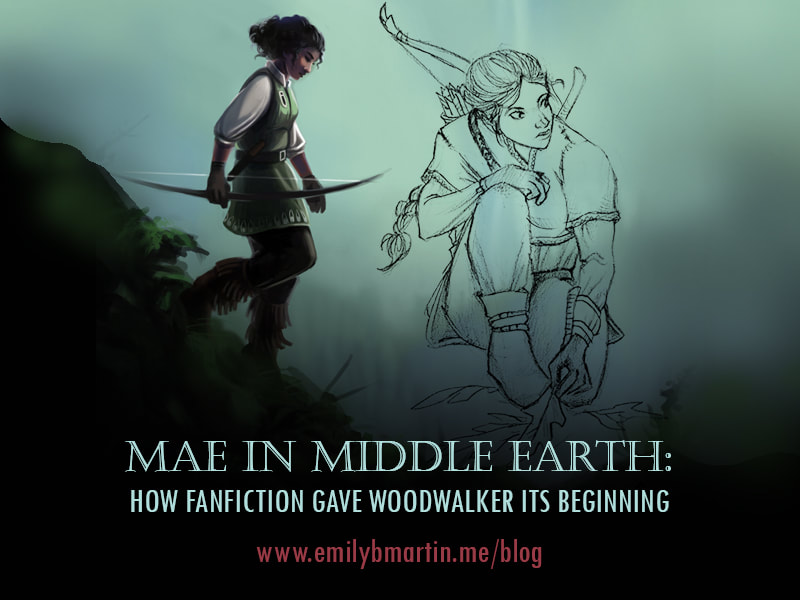
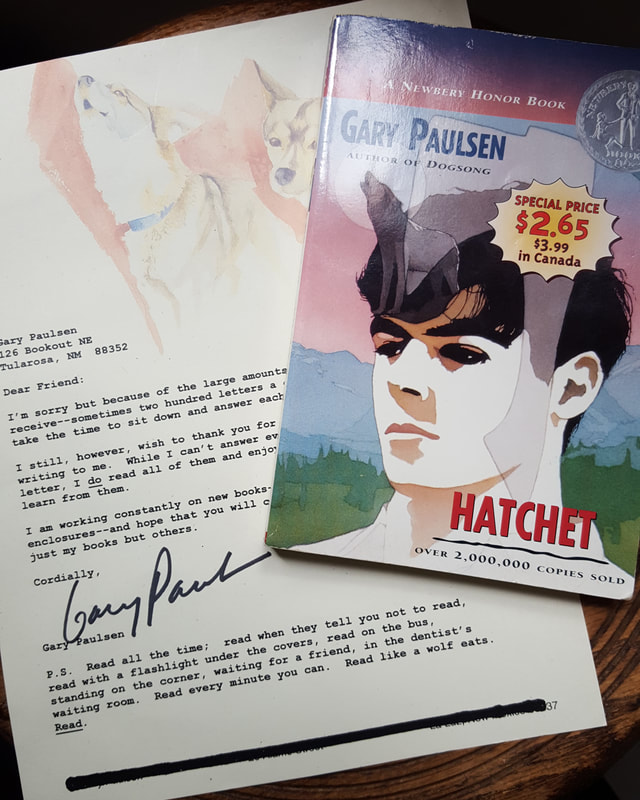
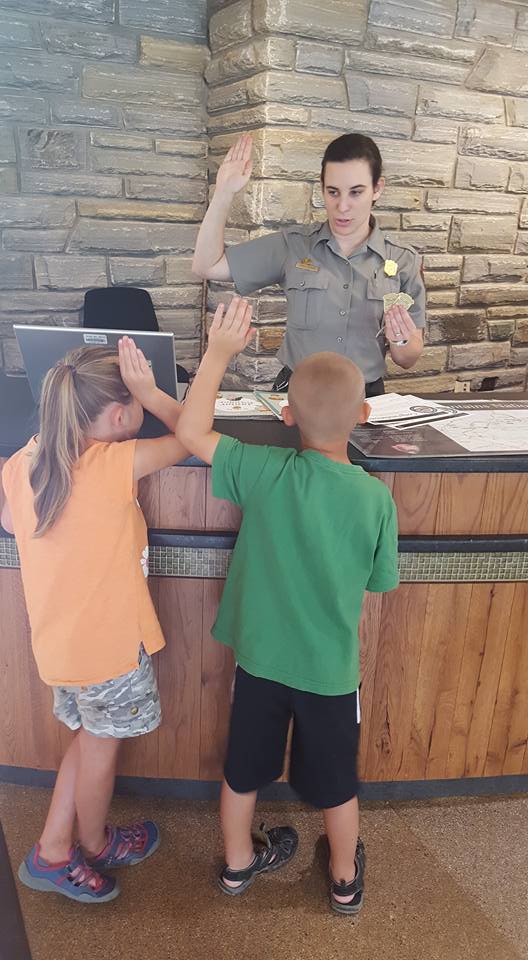
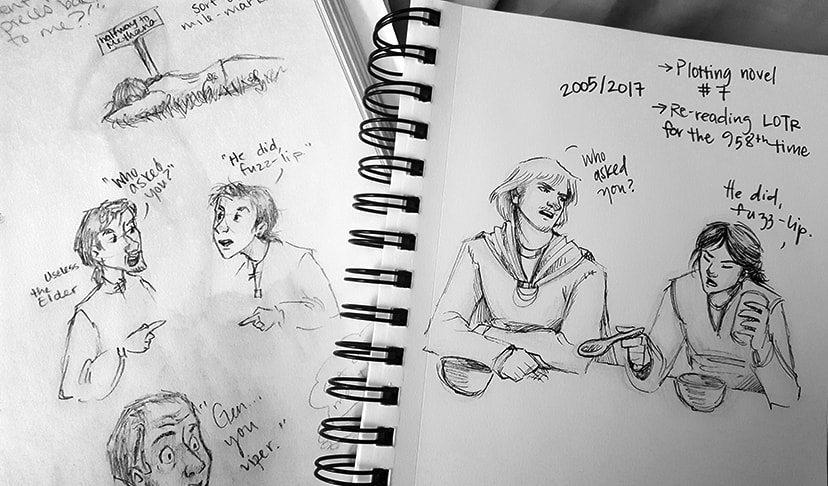
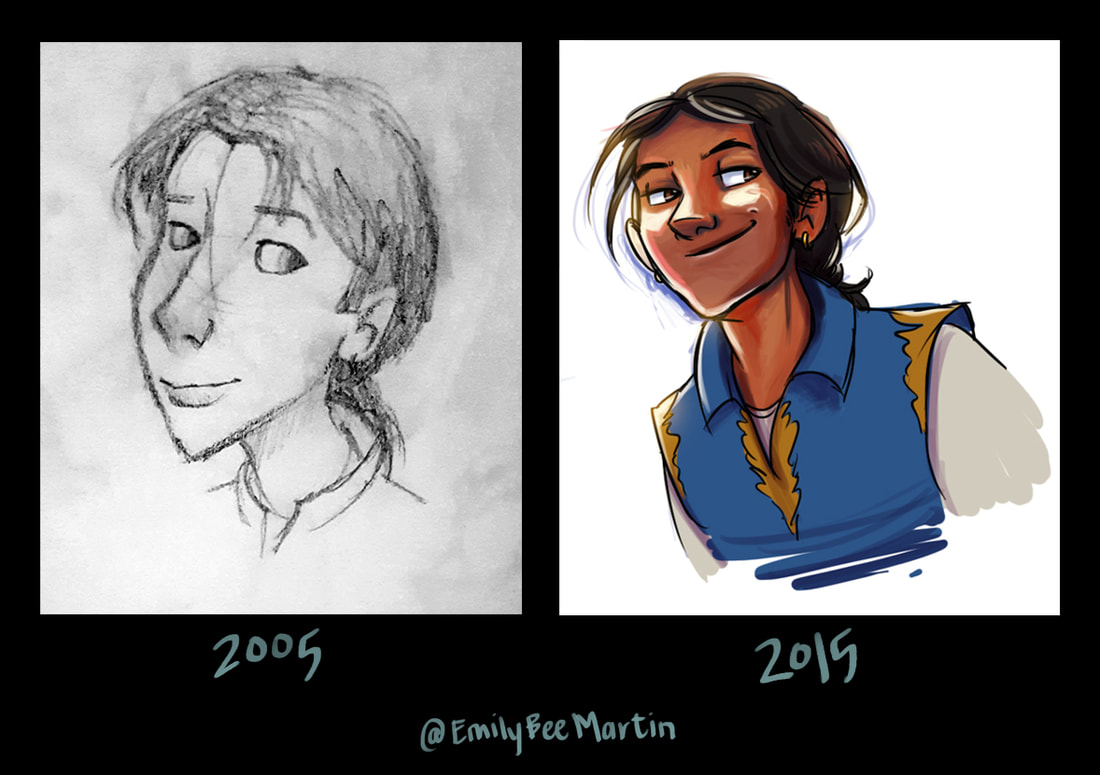

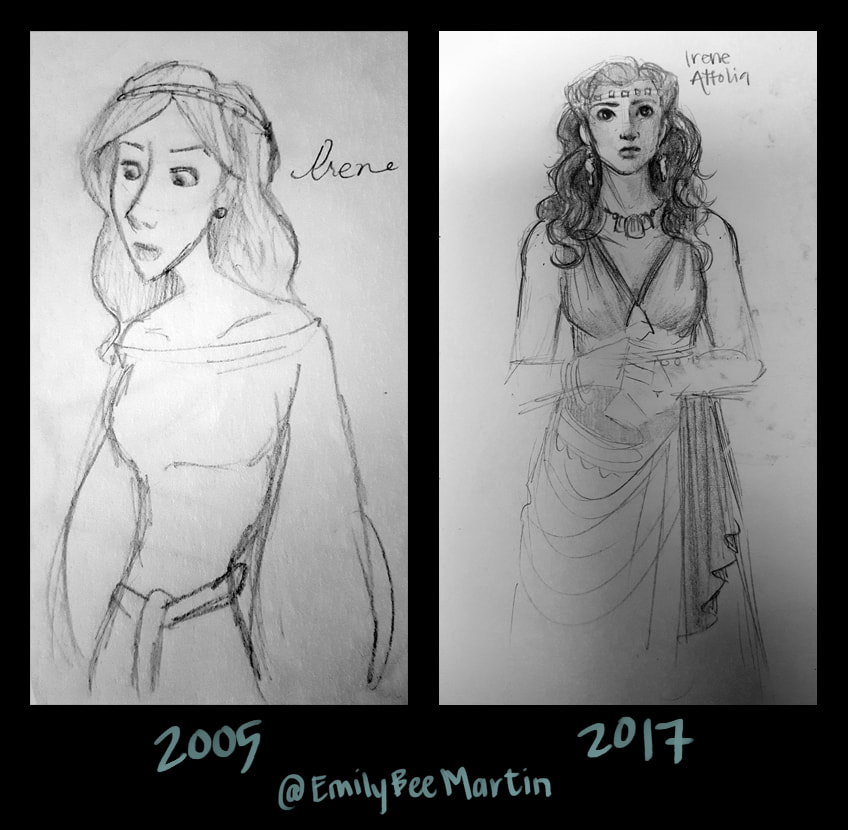
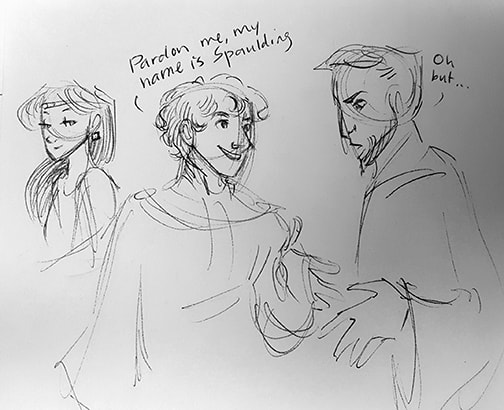
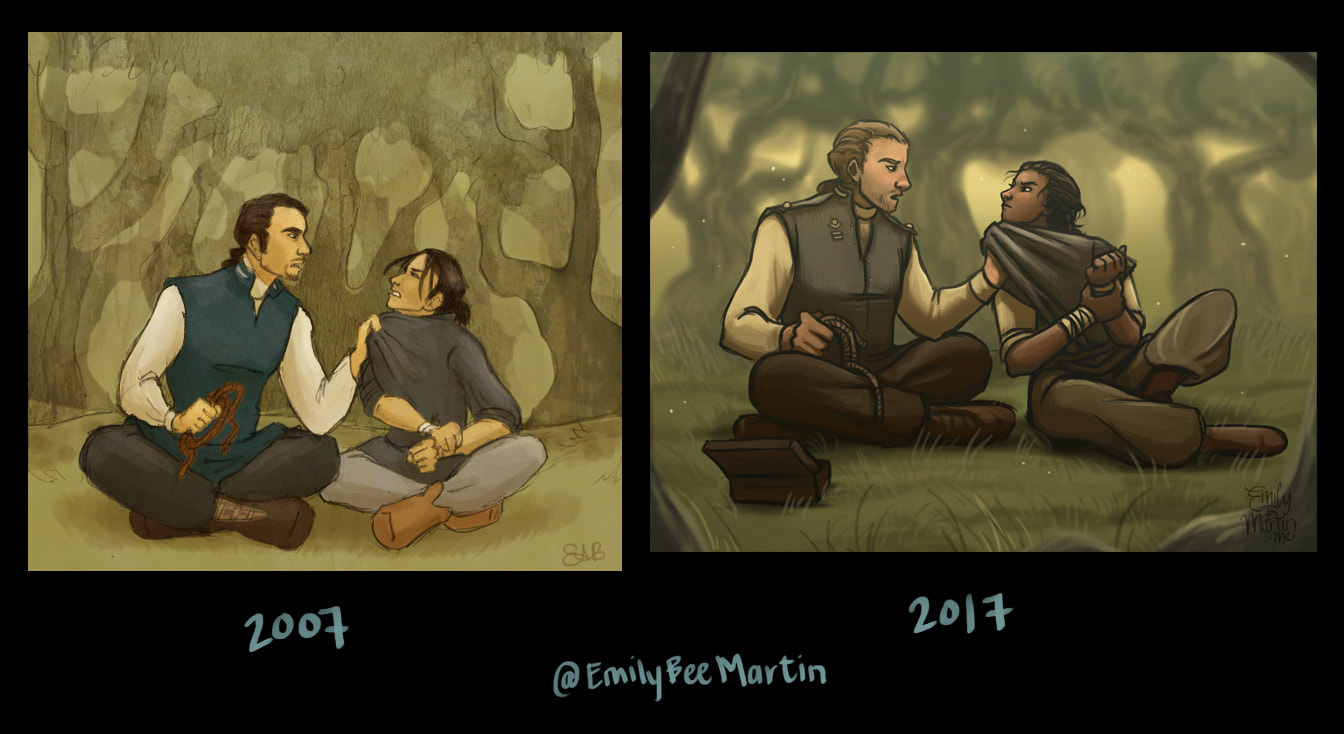
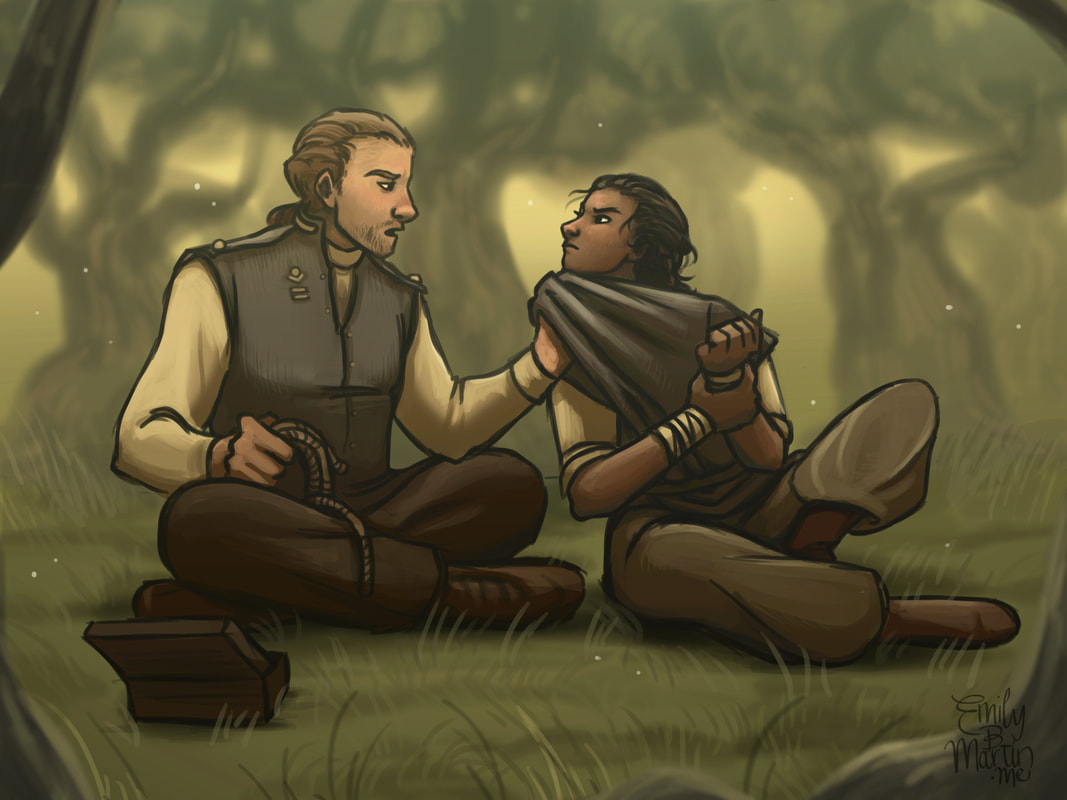
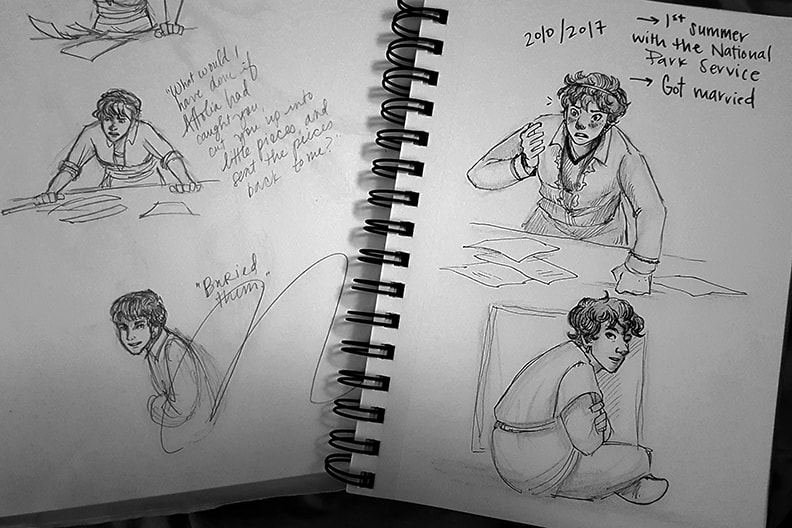
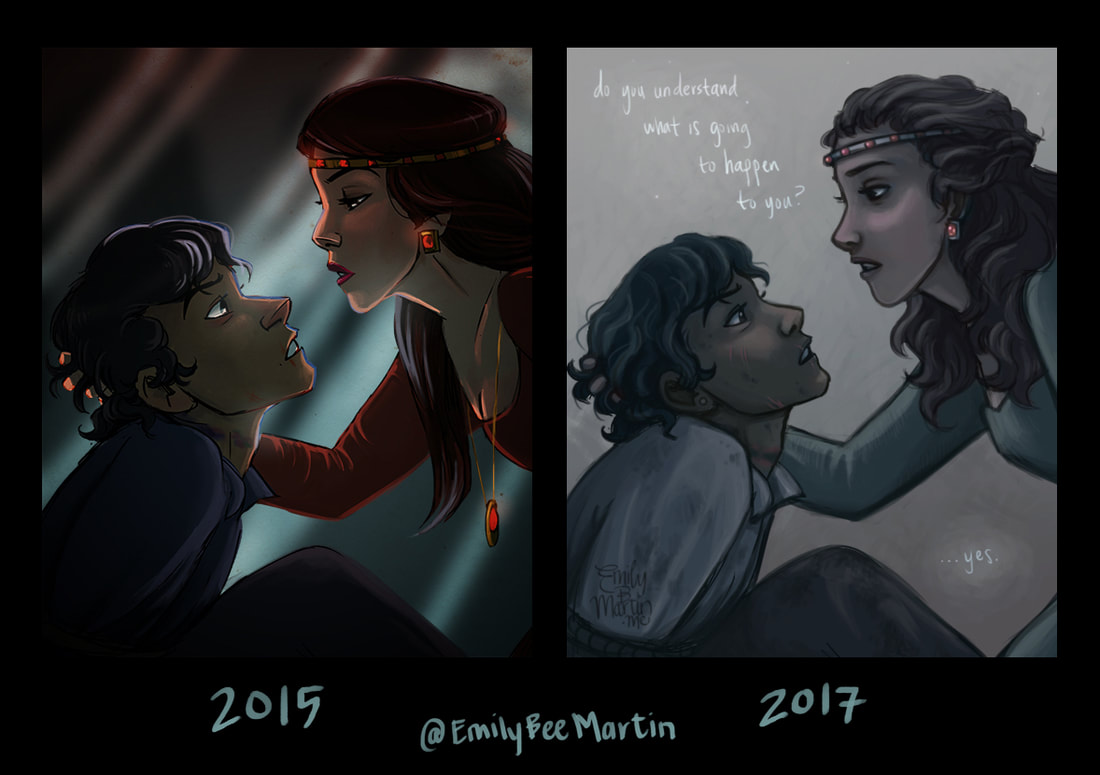
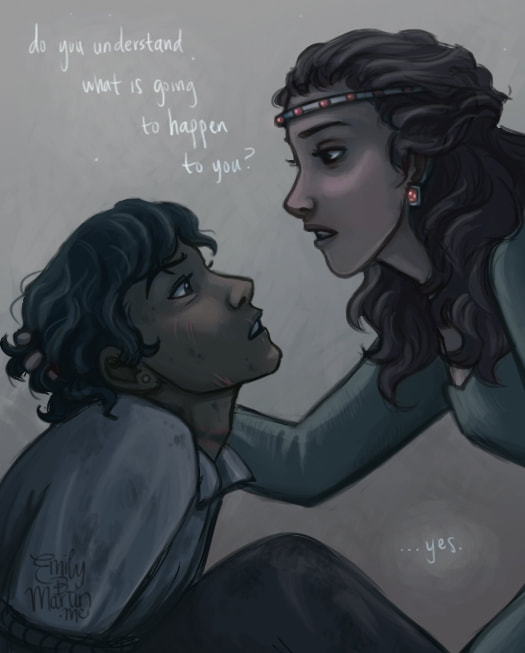
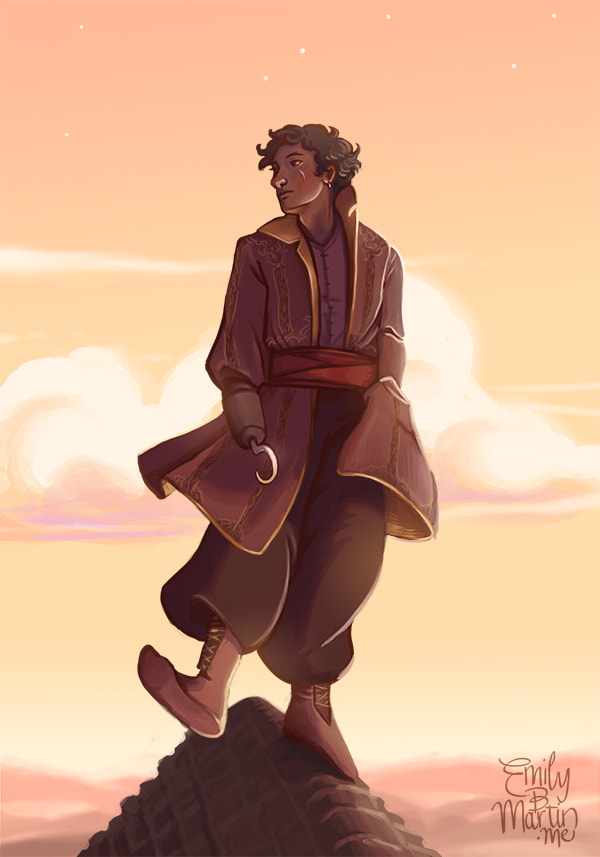
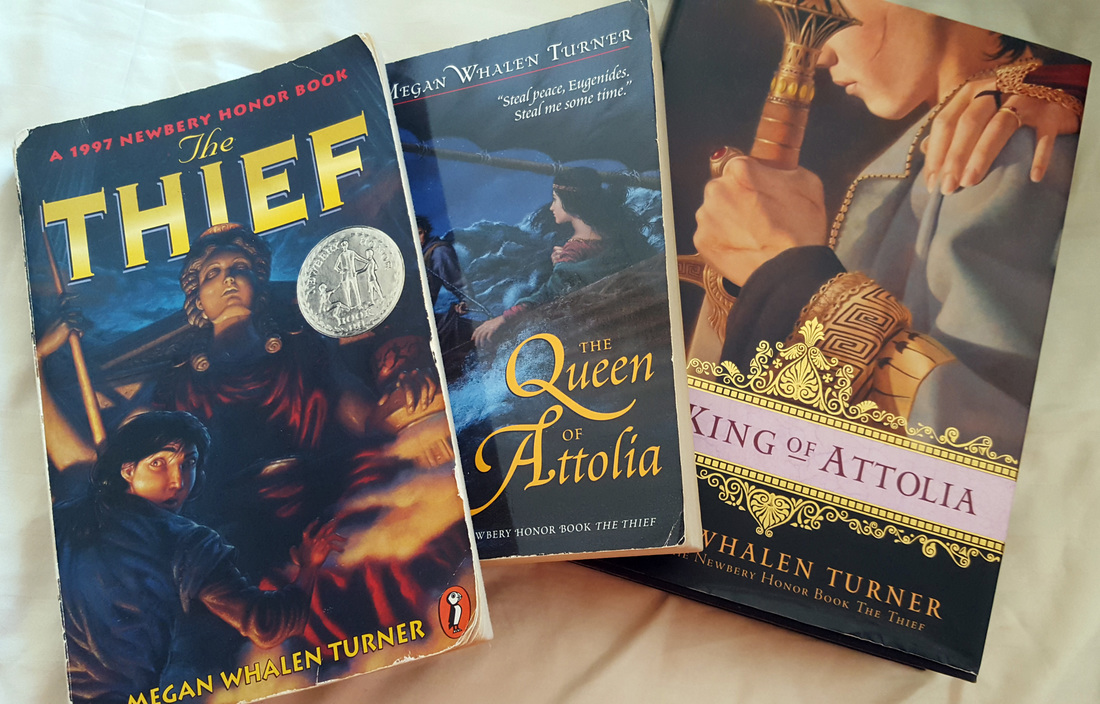
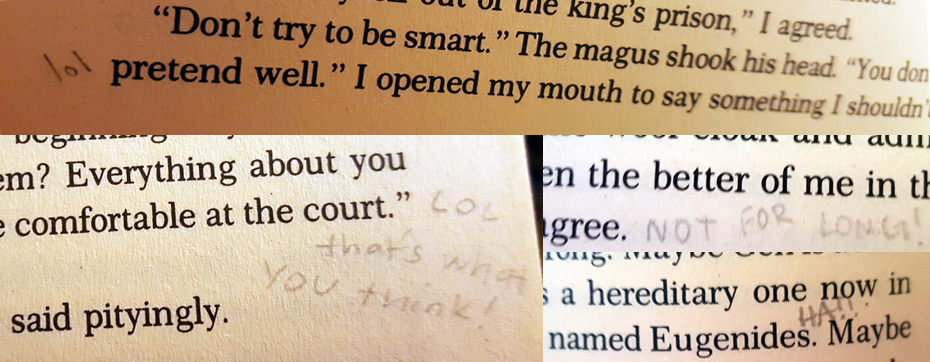
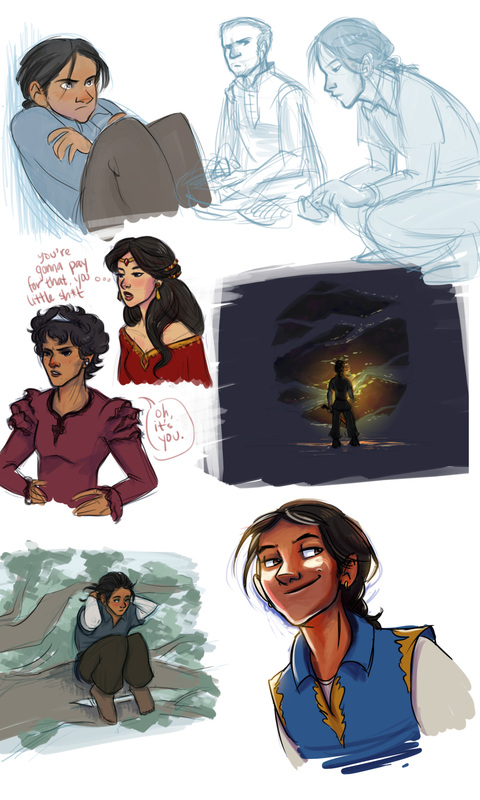
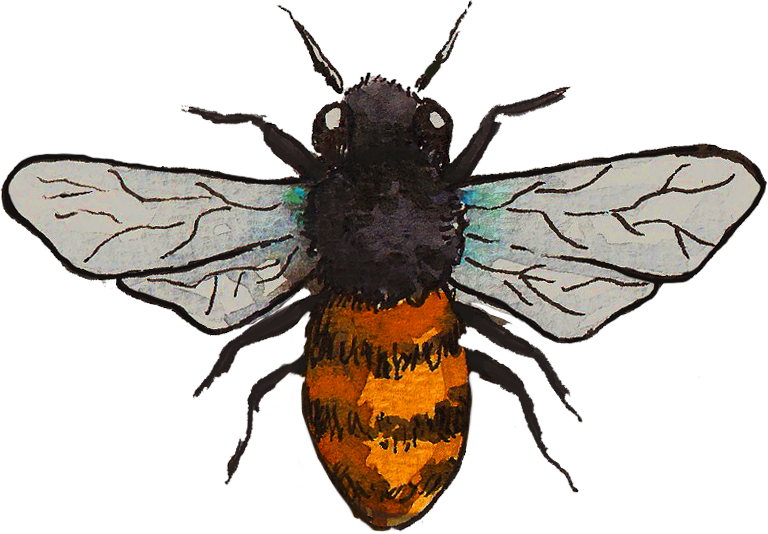
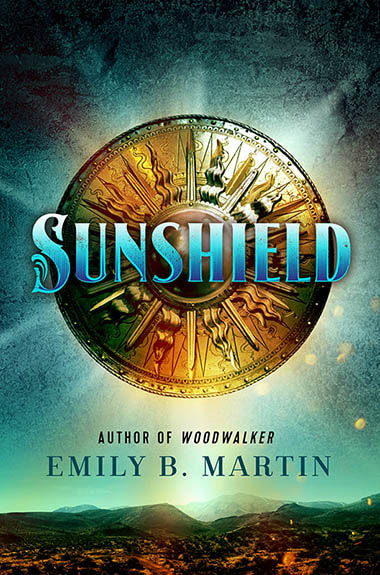
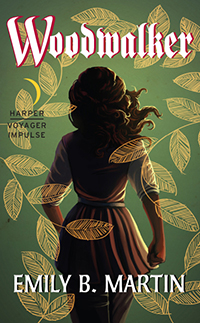
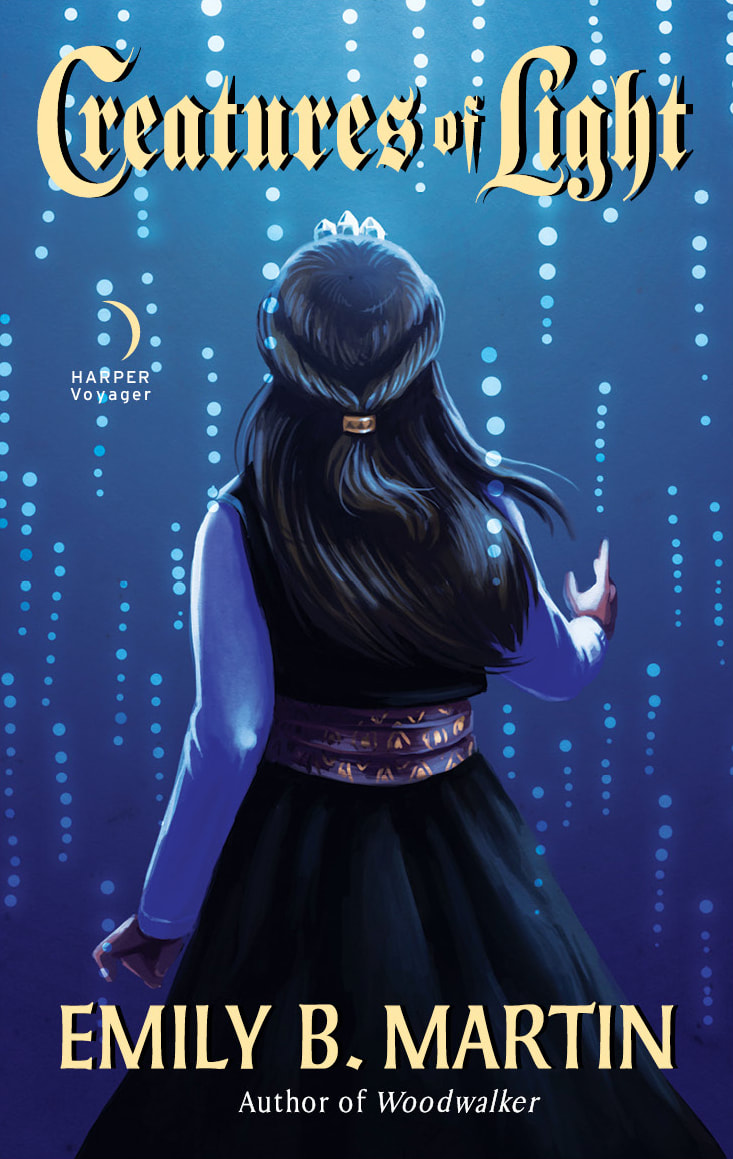
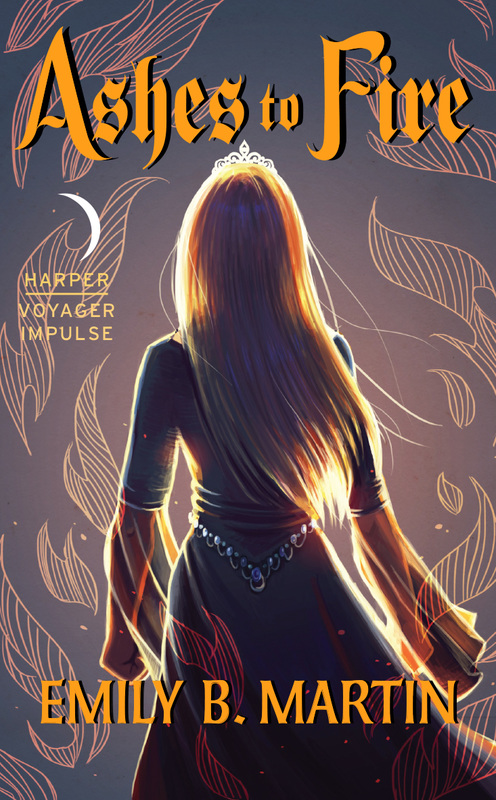
 RSS Feed
RSS Feed

